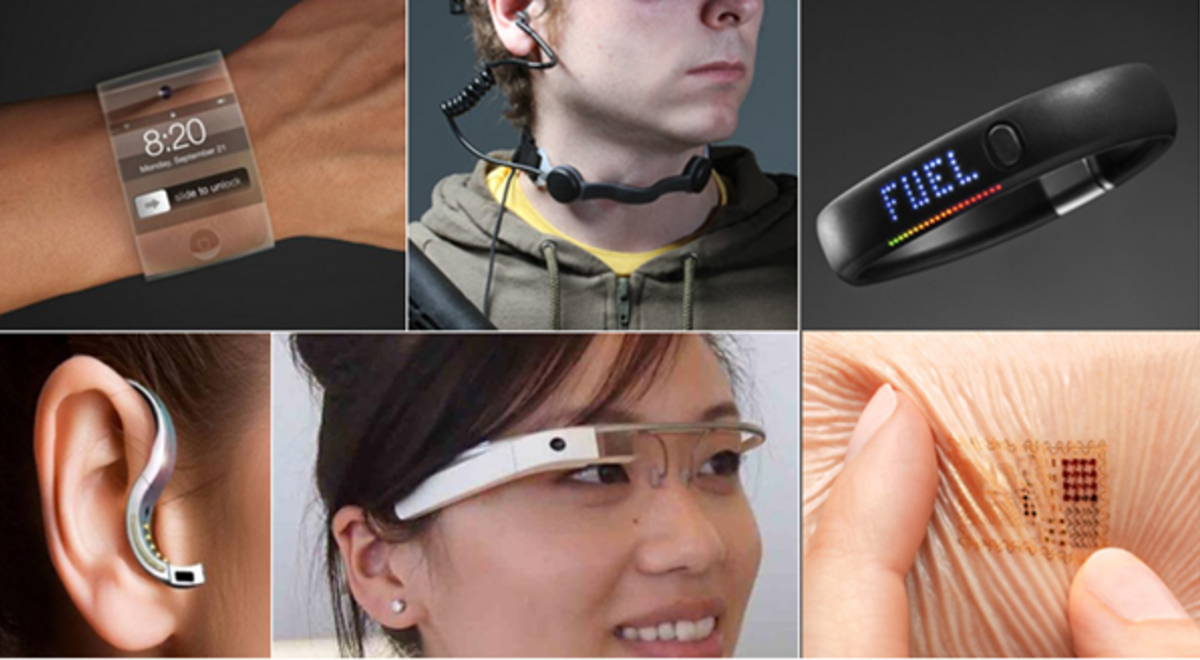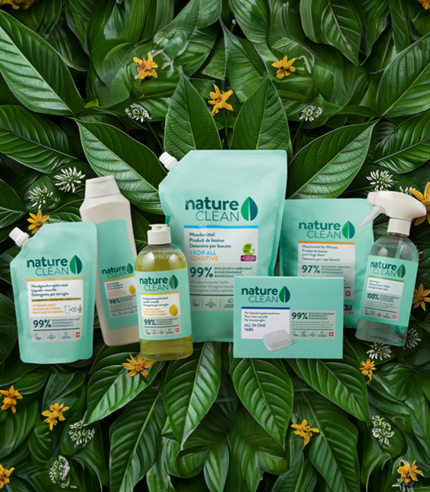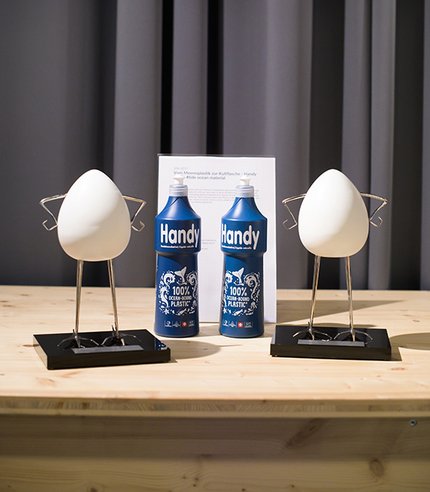- Display incoming calls and messages,
- Retrieve a personalised music playlist,
- Display news,
- Control smartphones and etc etc etc…
These small, often inconspicuous devices don’t (yet) play a central role in our daily lives but somehow seem to be part of a digital lifestyle; think about the hype when the Apple Watch was released.
Wearable technology doesn’t just include fitness and activity trackers
Wearable technology isn’t just smart watches and wrist bands; it’s also clothing, accessories and sunglasses that were often originally designed for space travel, training pilots or even for people with disabilities.
I find intelligent clothing particularly fascinating. Textiles with integrated electronics, so-called smart clothing. They collect the wearer’s biometric data and analyse it. The data is forwarded to a smartphone in real time using an integrated Bluetooth unit. Forerunners of this technology are suppliers such as OMsignal, offering smart shorts and shirts, or Athos with their clothing for athletes. In addition to performance, these also analyse movement and the current level of training. Even the fashion designer Ralph Lauren dressed the ball boys at the US Open 2014 with ‘The Polo Tech Shirt’ shirt. Sensors and special threads sewn into the garment measure the wearer’s pulse, breathing rates and stress level. This fitness tracking T-shirt, that at first glance looks like a traditional item of clothing, is also the fashion industry’s first step into the wearables market.
Google.Glass is the best known amongst data glasses. Their future is uncertain but other smart glasses are coming onto the market and claim to be a success. Both design and function are becoming increasingly important in the smart world of wearables. Many are also available in ‘decorative’ versions – stylish, luxurious and fashionable – disguised as jewellery. I think this is a positive development.
Wearables conquer the health sector
Wearables are also slowly coming into healthcare and are developing from comfortable gadgets into well-designed, highly-developed applications with serious uses.
There are now sensors that are worn on the body, wrist bands or jewels worn as a brooch or bracelet that warn you of sunburn and UV exposure and even calculate how much Vitamin D you need. Or products for small children, which measure how far away from their parents they are on the beach and then sounds an alarm if necessary. Detecting the sleep rhythms, heart rate, skin temperature, movement and sleeping position of a baby reassures its parents and takes away their fear of cot death. At the end of 2015 in America, a wearable is being released that alleviates chronic pain. ‘Quell’ is designed to be worn 24 hours a day, 7 days a week. Currently, this is the only pain-relieving wearable that can be worn while sleeping and has been approved for this use by the FDA.
Wearables as life-savers
Wearable technology can even be used for vital, life-saving situations. DexCom can make life easier for diabetics. It continuously measures blood sugar levels and provides real-time information about whether they are going up or down, and how quickly. This is essential in order to recognise the early signs of hypoglycaemia. There are so many amazing designs. There’s Embrace, the watch for people with epilepsy. It measures the skin’s electrical activity and can warn sufferers of a potential epileptic fit.
Unicef wants to introduce wearable technology into development aid.
Together with the software designer ARM and the strategy firm frog, they started the project ‘Wearables for Good’. The aim is to design technology for people in poor countries. Rather than devices that are for luxury and entertainment, Unicef would like to offer wearables that provide real assistance or can even save lives. For example, they could warn of fires or help to identify health problems, encourage changes in behaviour such as regular hand-washing or monitor progress in pregnancies, as mentioned by Erica Kochi from Unicef Innovation. ((Link to interview or source)) They could be used in remote regions that have poor medical provision or in refugee camps.
Smart future
Efforts and interest in wearables that can be used in medicine, psychology and development aid are steadily growing. The future of the wearable computer lies in the health market and promises great potential.
‘I ask myself: Where will the future of wearables lead?’
It is conceivable that in future, mini-computers will not just be worn as an item of jewellery on the arm, as they are now, but will be worn under the skin or as an electronic tattoo. A French start-up company wants to revolutionise the wearables market with the Cicret bracelet: a new, waterproof wrist band that smoothly turns the wearer’s forearm into a mobile/tablet display, including touchscreen functionality. According to the developers, this invention could even eclipse Google Glass. However, an initial prototype costs 700,000 euros! We await further developments with great interest…but such ideas should also be viewed with a certain amount of caution.
Lifestyle data and privacy
I would like to put the issue of the risks and side-effects of wearables – including data protection – to one side, because whenever personal data is collected and passed on, the question is always asked, quite rightly: what happens to my data? Where is it stored, who can access it all and what is done with it? All wearables users need to be aware of this. The issue goes beyond the scope of this blog post, but one thing is for sure: the industry has a lot of work ahead of it.







